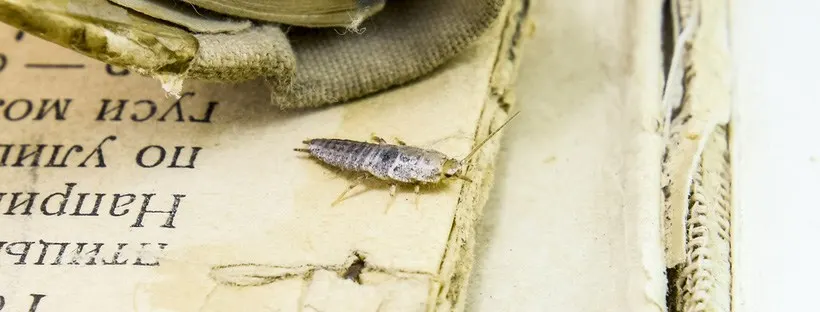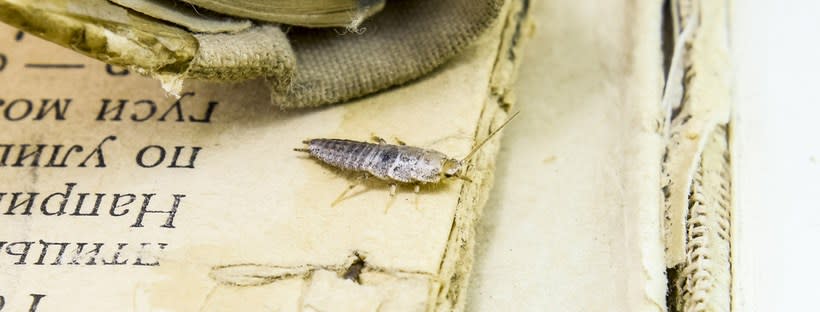
How To Get Rid Of Silverfish
April 24, 2024
What are Silverfish?
Silverfish have flattened, long, slender, brown-silvery bodies that are broad at the front and taper gradually toward the rear.
Like many other pests, these creepy crawlies are nocturnal insects.
You can find silverfish in any part of the US. They prefer high humidity and are often found in areas associated with heat and moisture; commonly found in bathtubs.
Silverfish can eat grains in your pantry or chew large holes in upholstery, clothing, or stored paper as a nuisance pest.

Silverfish Appearance
Silverfish are about 1/2 inch long, with a uniform silvery color over the top surface. Like fish, they appear to have silvery scales. Their bodies are long and slender. Silverfish are broad at their head with gradual tapering toward their rear.
Silverfish Diet
Silverfish eat a variety of foods containing carbohydrates or proteins. These include sugar, paper, starch, cotton, linen, glue, paste, rolled oats, dried beef, beef extract, and dead insects.
Silverfish require a large supply of starchy foods or molds to survive. Silverfish diets are high in protein, sugar, or starch, including cereals, moist wheat flour, the starch in book bindings, and paper on which there is glue or paste.
Silverfish can eat grains in your pantry or chew large holes in upholstery, clothing, or stored paper. As a nuisance pest, silverfish feed on wallpaper pastes, natural textiles, books, and papers.
Silverfish Habits
It can be hard to get rid of Silverfish because they are fast-moving and can travel throughout buildings. Once they find a good source of food, they stay close to it.
Silverfish go through a three-stage life cycle called gradual metamorphosis, whereas most insects have a four-stage life cycle (complete metamorphosis).
Silverfish can lay eggs at any time during the year. The eggs take 19-43 days to hatch. The life cycle from a silverfish egg to an adult silverfish is three to four months.
Silverfish are nocturnal, but they are also active in dark areas throughout the structures they inhabit. They can be a problem year-round.
You may see silverfish trapped in sinks and bathtubs because they enter seeking moisture and are unable to climb a slick vertical surface to escape.
Silverfish may attack fabric if there are leftover food particles (spilled cokes and other starchy carbohydrates ) or areas of soiled substances (sweat). They will not eat the fabric for a substance like clothes moths but will damage the fiber trying to get to the substances on the fabric.
Note: Attics are a favorite place for silverfish to inhabit due to the abundant food sources available from blown-in paper insulation and storage boxes.
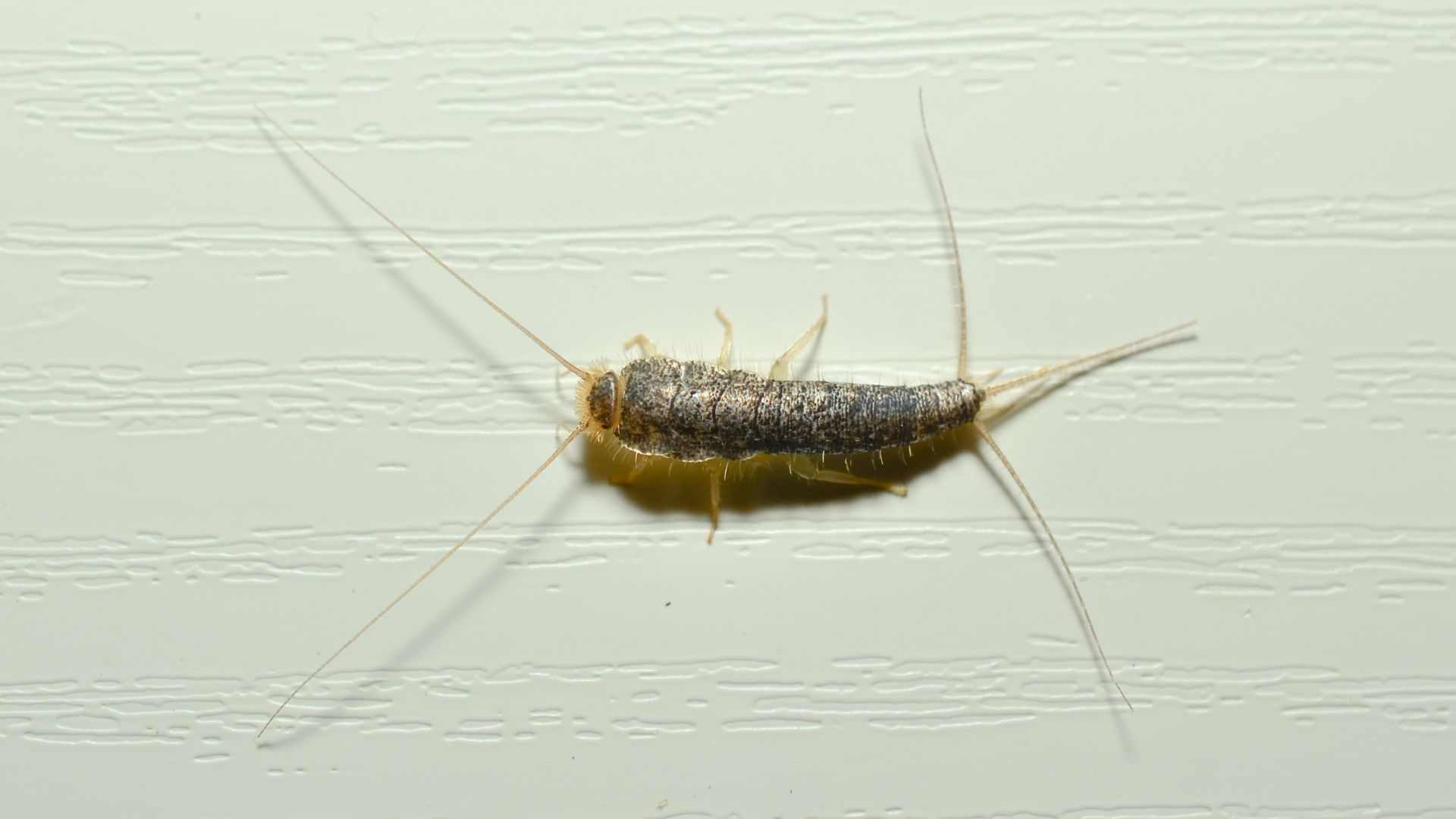
How to Get Rid of Silverfish Naturally
If you find Silverfish in the house, there are several natural remedies that will help you get rid of them. For a more severe silverfish infestation, you may have to get in touch with a pest control expert or professional pest control services. A pest control professional will be able to help you determine the severity of the infestation problem.
Here are our top natural remedies for getting rid of Silverfish:
1. Cedar Oil
Cedar oil is an essential oil that can be used to get rid of silverfish in the house. This is a safe, effective, and affordable Silverfish repellent.
Mix a few drops of Cedar oil with warm water and place the mixture into a spray bottle, spray this anywhere you notice Silverfish activity. Cedar shavings can also work as a repellent.
2. Purchase a Silverfish Trap or Create Your Own
An excellent and low-maintenance way to get rid of Silverfish is to use a Sticky Trap. You can purchase these at your local hardware store, or do it yourself!
To make your own Silverfish trap, place food scraps (cereal or pet food works great) inside a glass, then wrap the glass in tape.
Silverfish bugs will climb up the glass using the textured tape and fall into your trap, the slippery glass surface on the inside of the trap means they will not be able to escape.
Place several of these Silverfish traps wherever you have noticed silverfish activity. Leave them set for a couple of days, then discard any Silverfish bugs that you have caught.
3. Use Dried Bay Leaves
A simple, affordable natural Silverfish repellent can be found in your kitchen or your local supermarket.
Silverfish are deterred by the oils in the leaves, and just a few leaves can help keep your infestation at bay. The dried bay leaves will not kill the Silverfish bugs, but they will make it less likely for them to enter your home.
4. Borax
Borax is an effective way to eliminate an infestation in the home. This compound is found naturally in the ground and can be condensed to create boric acid. Boric acid is another potent remedy for silverfish.
Borax can be purchased at your local hardware store or online. This option is a slightly more aggressive approach and is best suited for those hard-to-reach places in your house.
Popular spots for a silverfish infestation may include the basement, behind cabinets, and in the attic. These spots will usually require Borax to completely eradicate them.
Get Rid of Silverfish with Insecticides
If you already have a silverfish bug problem inside your home, spray the home's perimeter with residual silverfish poison. Spraying the inside perimeter with a narrow band helps kill silverfish as they move throughout the structure.
Spraying the outside foundation wall will keep a variety of bugs from entering the structure, including silverfish. In addition, you can scatter an insecticide bait such as Intice Perimeter 10 in the attic.
Spray along the foundation wall with a two or three-foot band to adequately control silverfish. Czymic CS and Cyper WSP Silverfish poison last for two to three months.
Both Cyzmic CS and Cyper WSP are odorless. The wettable powder (WP) formulation in the Cyper WSP will leave a slight film visible against dark surfaces. Cyzmic CS Silverfish Poison does not leave a film.
However, if you have a severe active infestation of silverfish, further action will need to be taken. Look at stored boxes and insulation in your attic as a food source for the silverfish bugs.
It is best to dust or bait these areas for greater control. When you use baits or dust, get it as close as possible to the silverfish habitat for maximum effect. Make sure that the bait and dust stay hidden from humans and pets.
Using Insecticide Dust
Both CimeXa Dust and D-Fense Dust last six months in areas protected from the elements such as attics. When applying insecticide dust to attics, pay particular attention to insulation. Also, make sure to cover storage boxes, light fixtures, and electrical outlets.
Apply the dust to any area that can be kept dry.
An easy way to apply D-Fense Dust and Cimexa Dust is to use an insecticide duster called the Dustin Mizer. The Dustin Mizer Duster is good for cranking out a large amount of dust quickly.
You will want to use 1 lb of dust per 800-1000 square feet. For smaller dusting jobs, JT Eaton Bellow Duster works well.
Dust needs to be in hidden areas such as:
- Attic Insulation
- Behind Refrigerators and Ovens
- On Boxes
- Light fixtures
- Electrical outlets
- Underneath siding
Best Silverfish Poisons and Insecticides
Insecticides are one of the most effective methods for getting rid of silverfish bugs both inside and outside the home. Like all insects, silverfish can be controlled through a range of residual insecticides.
Some of the best Silverfish poisons and insecticides include:
-
Intice 10 Perimeter Bait works very well against silverfish as well as roaches and crickets. It can be sprinkled out in a self-contained one lb. bag, in all the areas you believe they are hiding. Typical areas of baiting would be in the attic or crawlspace.
-
PT 221L Residual Insecticide Aerosol
PT 221L Residual Insecticide Aerosol with a crack and crevice tip enables you to get behind baseboards and corners of the traveling paths of the silverfish. This type of aerosol is very helpful in bathrooms where silverfish like to eat the back of the wallpaper.
-
These ready-to-use traps protect books and museum pieces that silverfish may attack. It also traps Firebrats, Drugstore Beetles, Museum beetle larvae Firebrats, Museum beetle larvae, Brown carpet beetle larvae, and Psocoptera.
These ready-to-use traps protect books and museum pieces that silverfish may attack. It also traps Firebrats, Drugstore Beetles, Museum beetle larvae Firebrats, Museum beetle larvae, Brown carpet beetle larvae, and Psocoptera.
Silverfish Detection & Signs of a Silverfish Infestation
Silverfish can be found almost anywhere, but they prefer damp environments with moderate temperatures, such as basements, laundry rooms, and under sinks.
Since Silverfish travel long distances looking for food, it may be challenging to know the exact source of a silverfish infestation.
Silverfish prefer dark and moist environments (75 - 97% humidity). Some of their preferred habitats are basements, kitchens, sinks, bathtubs, bookcases, closet shelves, behind baseboards, wall voids, and sub-floors.
Silverfish molt throughout their lives. Finding their cast skin is a good indicator that Silverfish are present.
Finding small irregular-shaped holes in fabrics is a common sign of Silverfish. Irregularly shaped holes in wallpaper is another indicator because they like to eat the glue.
Silverfish may leave yellow stains on the fabric. Firebrats will feed extensively on rayon, whereas a Silverfish bug may damage it only slightly. Particularly, you may notice yellow stains on synthetic fabrics.
Outside, Silverfish may be found in nests. These nests can belong to other insects, birds, and mammals. They also live under tree bark and mulch. They are sometimes found in wood shingles or sidings on houses.
Inside, Silverfish are found just about anywhere that is dark and humid.
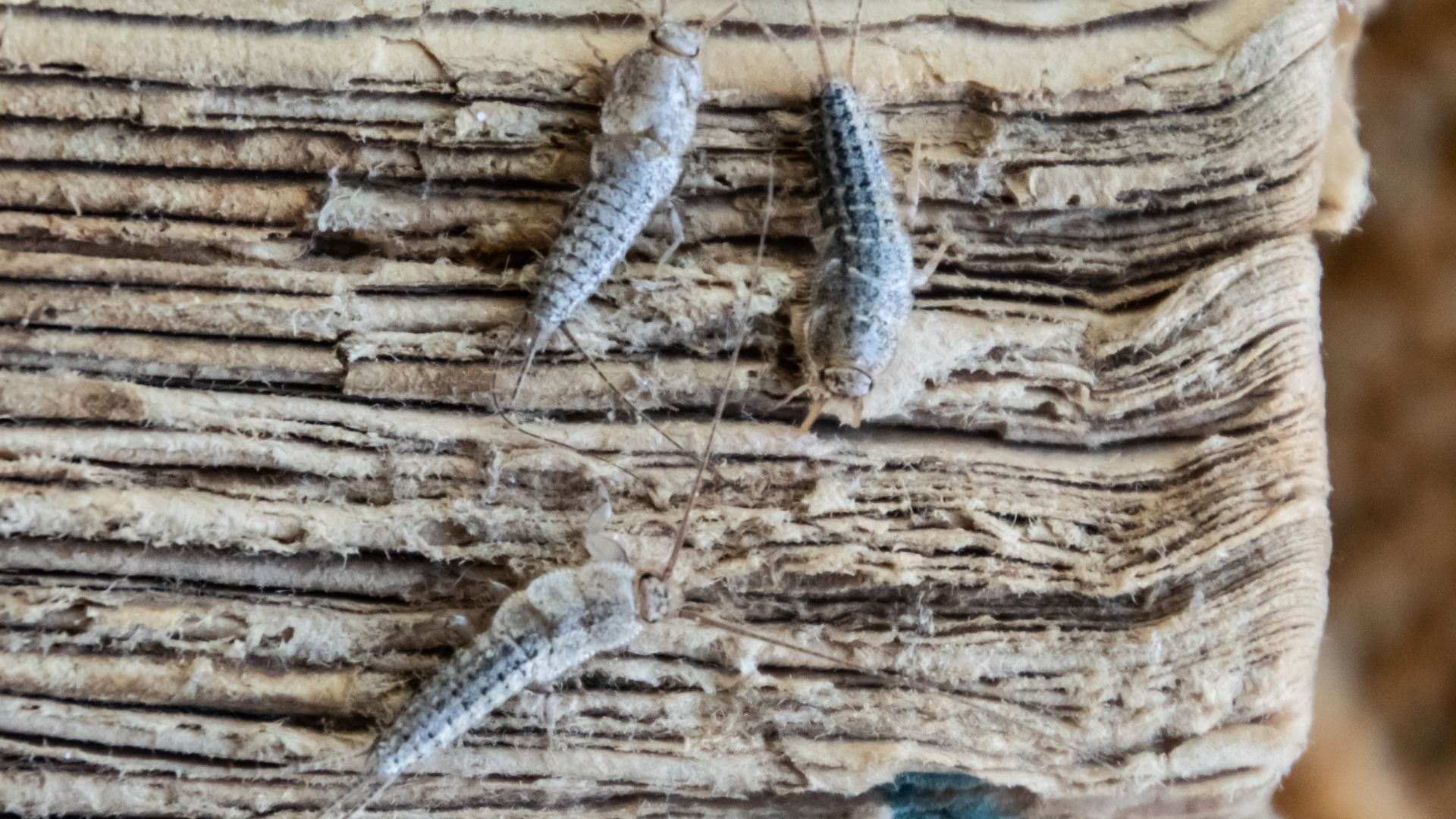
Prevent Silverfish Infestations
Eliminating sources of excessive moisture, such as faulty plumbing and condensation, will quickly reduce the silverfish population.
If you find Silverfish bugs in your house, they will likely be living behind furniture, in your bookshelf, under sinks, or in the basement. Silverfish love the humidity. They need moisture to survive and will establish themselves anywhere moisture levels in your home are high.
The use of a dehumidifier will reduce moisture content in the air, which is essential to silverfish survival. Silverfish can not survive inside buildings in low relative humidity.
A Silverfish infestation may be difficult to control if the relative humidity is above 50% year-round in an air-tight house.
Other dehumidifying methods include:
-
Ventilate closed rooms, basements, and attics
-
Eliminate any standing water from inside your house
-
Run an air conditioner
-
Consider using a bathroom fan in the shower area.
Reduce Clutter and Food Sources
Reduce clutter and food that attracts Silverfish. Remove easily accessible food sources such as flour, cereals, and pet foods by storing pantry food in tight containers.
In their natural environment, Silverfish eat decomposing items and plant material. Silverfish in your house will eat almost anything, which is why they are so hard to get rid of. Their diet consists of a wide variety of foods that have carbohydrates and proteins in them.
Foods that Attract Silverfish
They will eat dried beef, food scraps, flour, starch, paper, dead insects, glue, paste, cotton, linen, and some synthetic fibers.
Reduce clutter; silverfish bugs may be found in the attic and basement areas in storage boxes. They eat the glue on the boxes and book bindings. They may feed on surface molds found on cardboard boxes found in damp basements or attics.
How to Reduce Silverfish Infestations Outside
Silverfish may live outside under stones, logs, rocks, leaf clutter, and bird nests. They prefer warm temperatures. Remove any possible harborage areas, such as leaf and grass litter, near your home. Keep gutters cleaned out to reduce the risk of a silverfish infestation.
It is helpful to use standard exclusion techniques such as caulking cracks and crevices, making sure screens are tight-fitting, and the use of weather stripping around windows and doors. If you continue to have problems after you've tried DIY methods, you may benefit from contacting a pest control specialist.
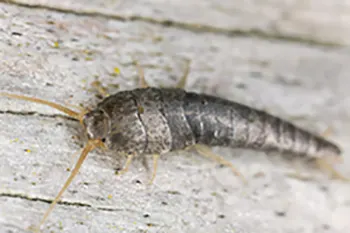
Key Takeaway
Silverfish love to eat paper and glue, so it stands to reason that they love cardboard boxes. Replace them with storage bins when practical.
Find All Your Silverfish Solutions at DIY Pest Control
For all your pest control needs, trust DIY Pest Control. We offer a comprehensive range of products and expert advice to help you effectively eliminate silverfish from your home. Shop with us today and experience the peace of mind that comes with a pest-free environment.
Shop Silverfish Control ProductsHow to Get Rid of and Kill Silverfish Quickly
Learn how to get rid of silverfish infestations in your home with our spray & control kits
What Are Silverfish ?
Silverfish insects have flattened, long, slender, brown-silvery bodies that are broad at the front and taper gradually toward the rear. You can find silverfish in any part of the US. They prefer high humidity and are often found in areas associated with heat and moisture; commonly found in bathtubs. Silverfish can eat grains in your pantry or chew large holes in upholstery, clothing, or stored paper as a nuisance pest.
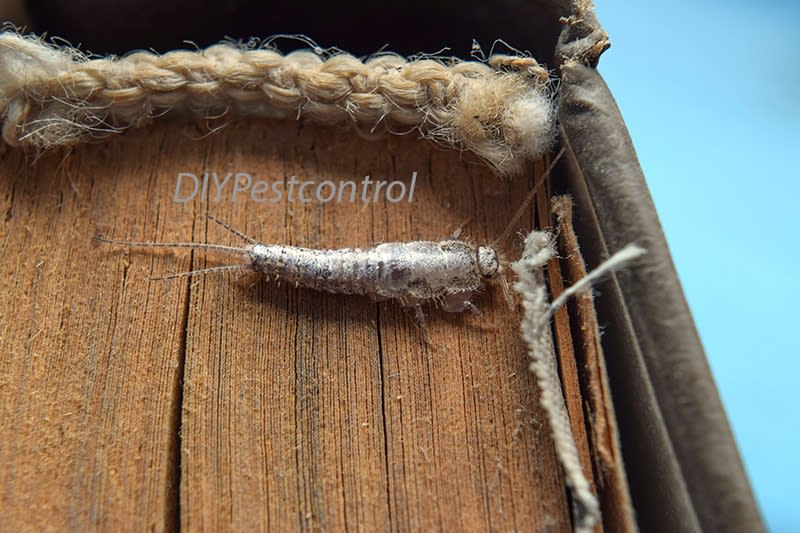
Prevent Silverfish Infestations
To prevent silverfish inside infestations, eliminate sources of excessive moisture in places like faulty plumbing and areas of condensation. Silverfish love the humidity. The use of a dehumidifier will reduce moisture content in the air that is essential to silverfish survival. Silverfish can not survive inside buildings in low relative humidity. Silverfish infestations may be difficult to control if the relative humidity is above 50% year-round in an air-tight house.
Other dehumidfy methods include:
- Ventilate closed rooms and attics
- Eliminate standing water
- Run an air conditioner
- Consider a bathroom fan in the shower area.
Reduce clutter and food sources
Reduce clutter and food sources. Regularly vacuum cracks and crevices around the home with a narrow tip. Remove easily accessible food sources such as flour, cereals, and pet foods by storing pantry food in tight containers to reduce food sources. They eat a wide variety of foods that have carbohydrates and proteins. They will eat dried beef, flour, starch, paper, dead insects, glue, paste, cotton, linen, and some synthetic fibers. Reduce clutter; silverfish may be found in the attic and basement areas in storage boxes. They eat the glue on the boxes and book bindings. They may feed on surface molds found on cardboard boxes found in damp basements or attics. Make sure that vents are open in the crawlspace.
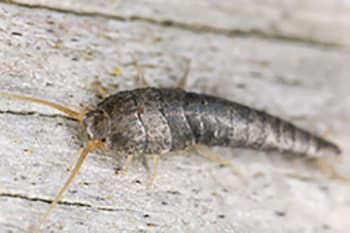
Reduce Silverfish Infestations Outside
Silverfish may live outside under stones, rocks, leaf clutter, birds nests. They prefer warm temperatures. Remove any possible harborage areas such as leaf and grass litter near your home. Keep gutters cleaned out. It is helpful to use standard exclusion techniques such as caulking cracks and crevices, making sure screens are tight-fitting and the use of weather stripping around windows and doors.
Key Takeaway
Silverfish love to eat paper and glue so it stands to reason that they love cardboard boxes. Replace them with storage bins when practical.
Silverfish Removal with Insecticides
If you already have a silverfish problem inside your home, spray the home's perimeter with a residual insecticide. Spraying the inside perimeter with a narrow band helps kill silverfish as they move throughout the structure. Spraying the outside foundation wall will keep a variety of bugs from entering the structure, including silverfish. In addition, you can scatter an insecticide bait such as Intice Perimeter 10 in the attic.
Spray along the foundation wall with a two or three-foot band. Avesta CS and Cyper WSP last for two to three months. Both Avesta CS and Cyper WSP are odorless. The wettable powder (WP) formulation in the and Cyper WSP will leave a slight film that against dark surfaces. Avesta CS does not leave a film.
However, if you have a severe active infestation of silverfish, further action will need to be taken. Look at stored boxes and insulation in your attic as a food source for the silverfish. It is best to dust or bait these areas for greater control. When you use baits or dust, get it as close as possible to the silverfish habitat for maximum effect. Make sure that the bait and dust stay hidden from humans and pets.
Using Insecticide Dust
Both Cimexa Dust and D-Fense Dust last six months in areas protected from the elements such as attics. When applying insecticide dust to attics, pay particular attention to insulation. Also, make sure to cover storage boxes, light fixtures, and electrical outlets.
Apply the dust to any area that can be kept dry.
An easy way to apply D-Fense Dust and Cimexa Dust is to use an insecticide duster called the Dustin Mizer. The Dustin Mizer Duster is good for cranking out a large amount of dust quickly. You will want to use 1 lb of dust per 800-1000 square feet. For smaller dusting jobs, JT Eaton Bellow Duster works well.
Dust needs to be in hidden areas such as:
- Attic Insulation
- Behind Refrigerators and Ovens
- On Boxes
- Light fixtures
- Electrical outlets
- Underneath siding
Silverfish Removal with Insecticides
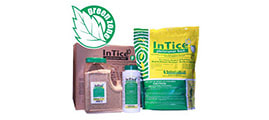
Intice 10 Perimeter Bait works very well against silverfish as well as roaches and crickets. It can be sprinkled out in a self-contained one lb.bag, in all the areas you believe they are hiding. Typical areas of baiting would be in the attic or crawlspace.

PT 221L Residual Insecticide Aerosol PT 221L Residual Insecticide Aerosol with a crack and crevice tip enables you to get behind baseboards and corners of the traveling paths of the silverfish. This type of aerosol is very helpful in bathrooms where silverfish like to eat the back of the wallpaper.
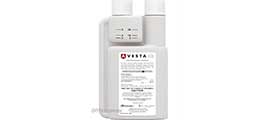
Silverfish Appearance
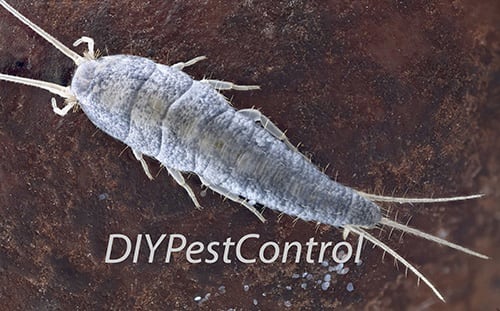
Silverfish are about 1/2 inch long, with a uniform silvery color over the top surface. Their bodies are long and slender. Silverfish are broad at their head with gradual tapering toward their rear.
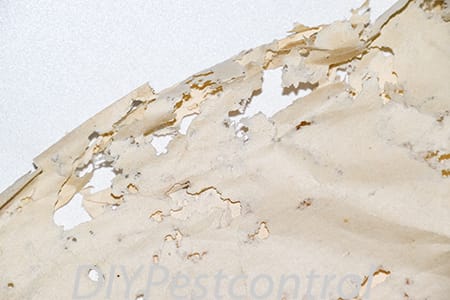
Silverfish Diet and Signs of Infestations
Silverfish eat a variety of foods containing carbohydrates or proteins. This variety includes sugar, paper, starch, cotton, linen, glue, paste, rolled oats, dried beef, beef extract, and dead insects. Silverfish require a large supply of starchy foods or molds to survive. Silverfish diets are high in protein, sugar, or starch, including cereals, moist wheat flour, the starch in book bindings, and paper on which there is glue or paste. Silverfish can eat grains in your pantry or chew large holes in upholstery, clothing, or stored paper. As a nuisance pest, silverfish feed on wallpaper pastes, natural textiles, books, and papers.
Silverfish Habits
- Silverfish are fast-moving and can travel throughout buildings. Once they find a good source of food, they stay close to it.
- Silverfish go through a three-stage life cycle called gradual metamorphosis, whereas most insects have a four-stage life cycle (complete metamorphosis). Silverfish can lay eggs at any time during the year. The eggs take 19-43 days to hatch. The life cycle from silverfish egg to adult is three to four months.
- Silverfish are nocturnal, but they are also active in dark areas throughout the structures they inhabit. They can be a problem year-round.
- You may see silverfish trapped in sinks and bathtubs because they enter seeking moisture and are unable to climb a slick vertical surface to escape.
- Silverfish may attack fabric if there are leftover food particles (spilled cokes and other starchy carbohydrates ) or areas of soiled substances (sweat). They will not eat the fabric for a substance like clothes moths but will damage the fiber trying to get to the substances on the fabric.
- Note: Attics are a favorite place for silverfish to inhabit due to the abundant food sources available from blown in paper insulation and storage boxes.
Silverfish Detection and Signs of Infestation
Silverfish can be found almost anywhere, but they prefer damp environments with moderate temperatures such as basements, laundry rooms, and under sinks.
Since Silverfish travel long distances looking for food, it may be challenging to know the exact source of silverfish infestations.
- Silverfish prefer dark and moist environments (75 - 97% humidity). Some of their preferred habitats are basements, kitchens, sinks, bathtubs, bookcases, closet shelves, behind baseboards, wall voids, and sub-floors.
- Silverfish molt throughout their lives. Finding their cast skin is a good indicator that Silverfish are present.
- Finding small irregular shaped holes in fabrics is a common sign of Silverfish. Irregularly shaped holes in wallpaper is another indicator because they like to eat the glue.
- Silverfish may leave a yellowish stain on the fabric. Firebrats will feed extensively on rayon, whereas Silverfish usually damage it only slightly.
- Outside, Silverfish may be found in nests. These nests can belong to other insects, birds, and mammals. They also live under tree bark and mulch. They are sometimes found in wood shingles or sidings on houses.
- Inside, Silverfish are found just about anywhere that is dark and humid.
Recommended Silverfish Control Insecticides and Dust
Written by our resident pest control expert Ken Martin.






